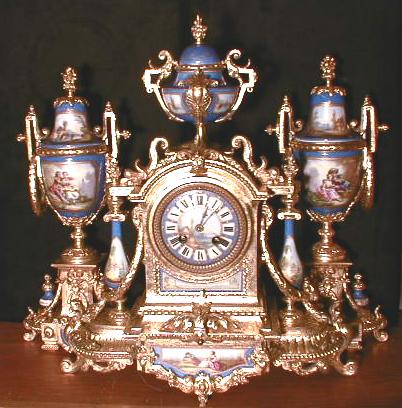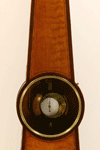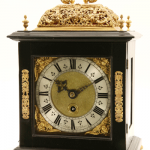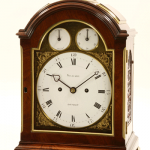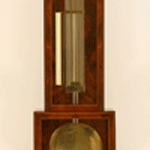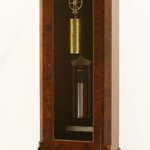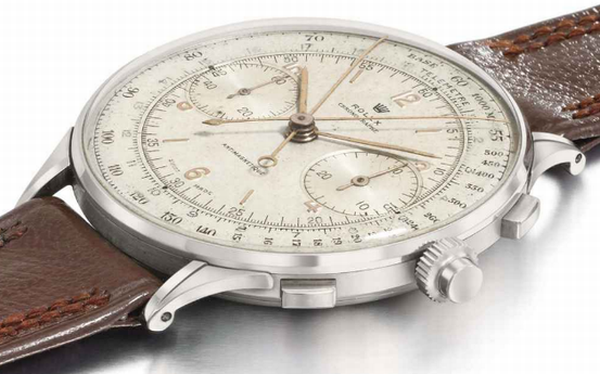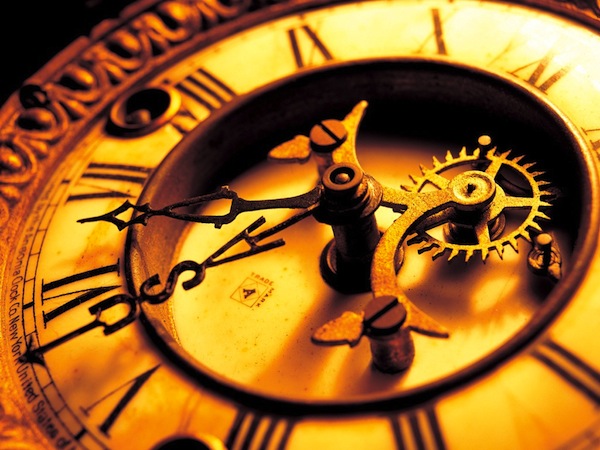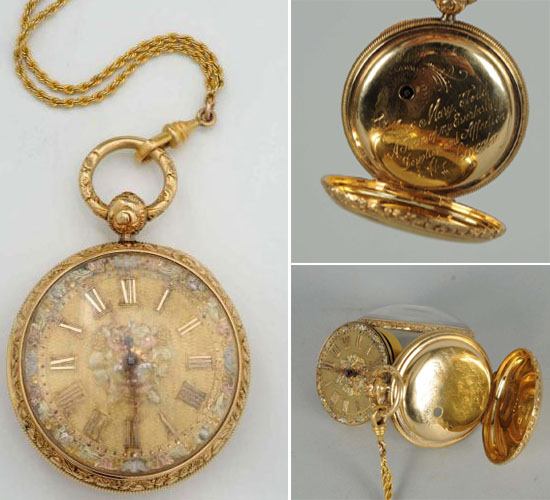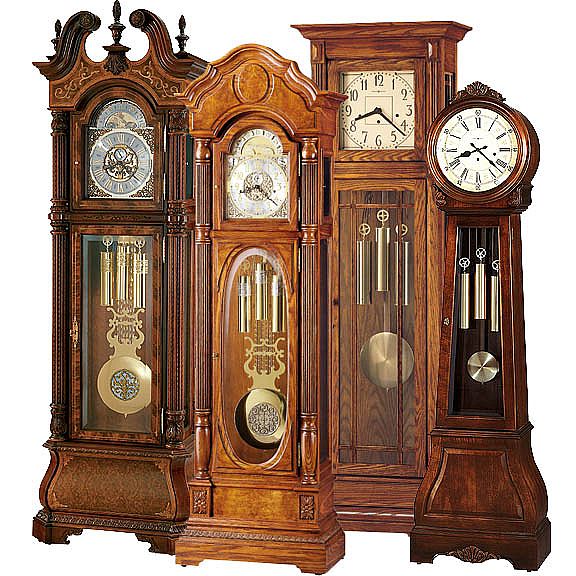- Fig 1
- Fig 2
- Fig 3
- Fig 4
- Fig 5
- Fig 6
(Fig 1), the unsigned weight driven skeleton clock of Continental origin is most unusual. Similar clocks have been made by Verneuil and these are very rare with one other similar clock with full calendar work.
Another unique clock is the longcase clock by Merlin (Fig. 2). He was a great inventor but made very few clocks. He is noted more for his musical instruments and mechanical music machines than he is for clocks. The particular longcase illustrated is the only known longcase by him and was exhibited at an exhibition of his work in Kenwood House.
Perhaps one of the most popular forms of clock these days is the English bracket clock. These were produced from the very early days of horology in the mid to late 1600s right through to the present day.
The earlier clocks such as the basket top clock by Massey (Fig. 3) are one of the stronger areas of the market especially where the maker is well known.
The Vulliamy pad top clock shown in the picture below (Fig. 4) is much later but is by one of the most collectable makers of the period.
Viennese clocks were in their heyday from just before 1800 through to about 1860. Before that period the expertise within the Viennese clockmaking industry was not as good as in the French or English industries and the government at the time took steps to improve it.
This culminated in a golden age for Viennese clocks and a prime example of the sort of top quality unusual clocks they could produce is the Dorfer (Fig. 5) floor standing Laterndluhr shown in the picture. This has a duration of 12 months and is in the most fantastic and elegant mahogany case.
An English longcase regulator (Fig. 6). These clocks were produced for domestic use from the end of the 18th century through to the beginning of the 20th century. Prior to that most regulators would have been used in observatories and for scientific purposes. The regulator shown is exceptional in having a skeletonised dial signed for Hennessy, Swansea although the movement was made by Smiths & Sons of Clerkenwell, London. Apart from the skeletonised dial the case style is relatively typical of many of the flat top regulators made in the 1850s and 1860s.
The one thing that all of the above clocks have in common is that they are beautiful antique items which even in today’s fast moving world tell the time accurately enough to be used as a main clock in any household.
Also they will prove, as they have previously, to be a reasonably secure and hopefully appreciating asset.

